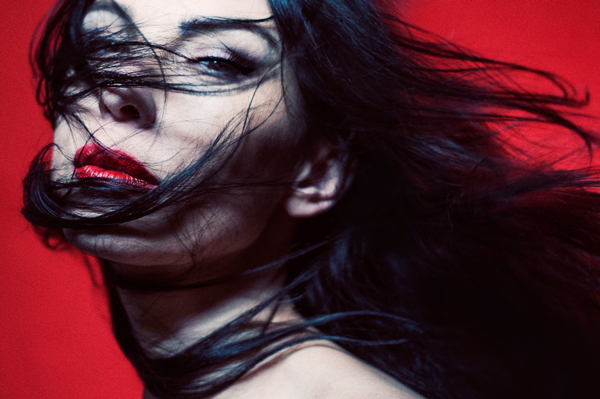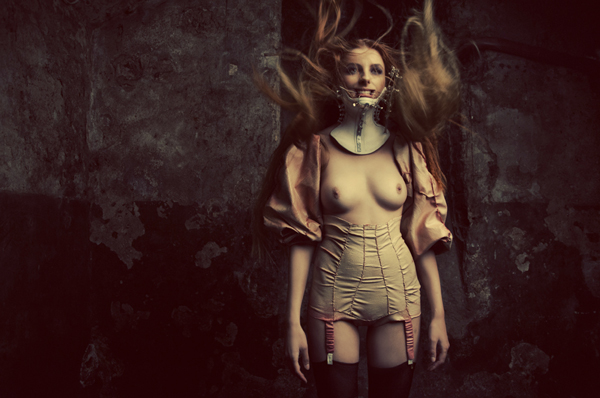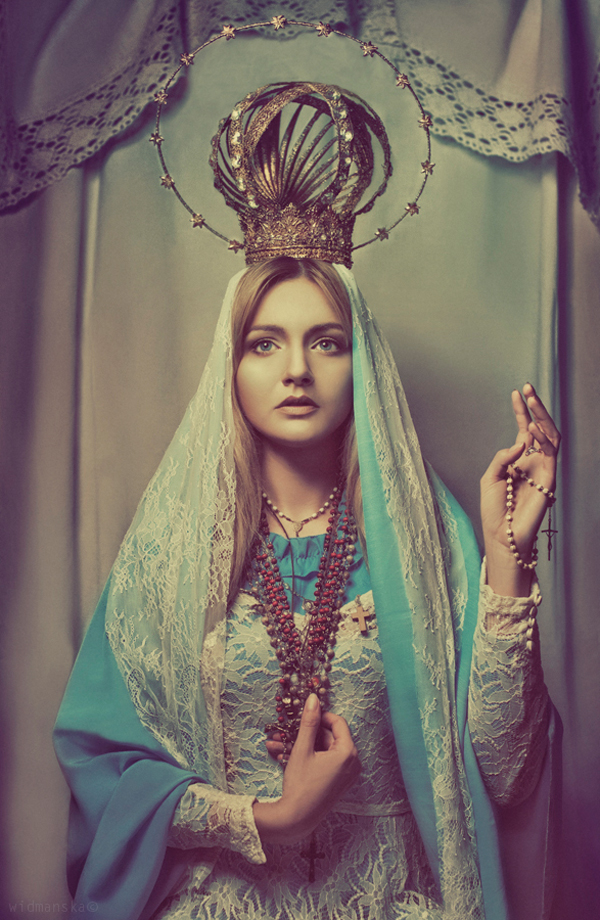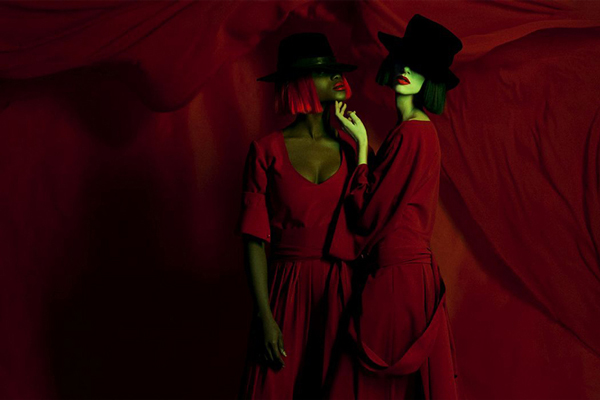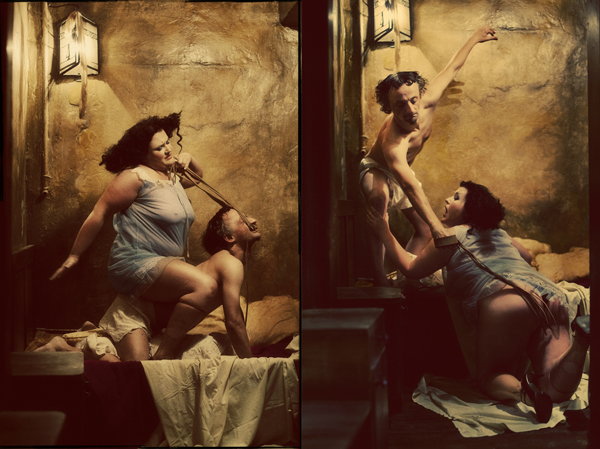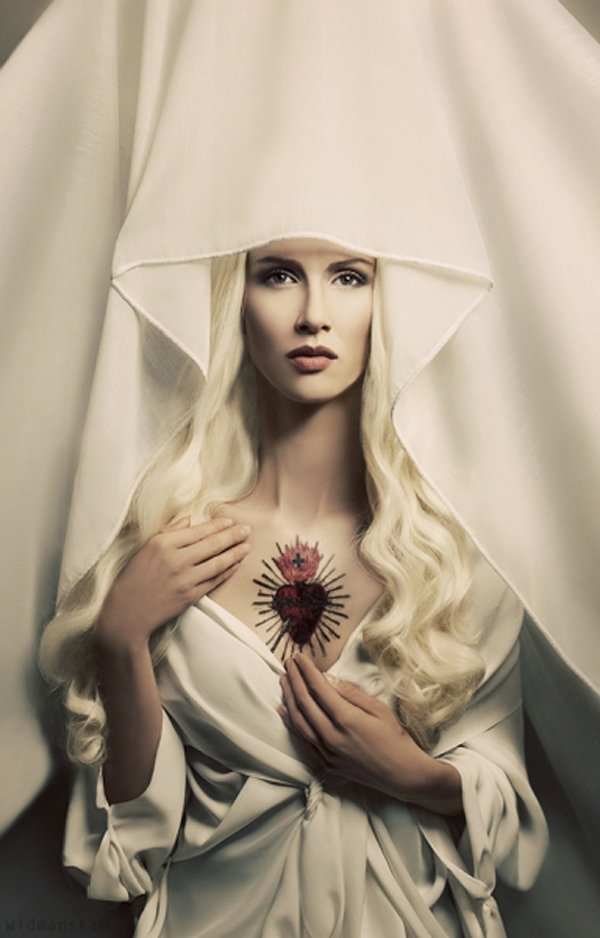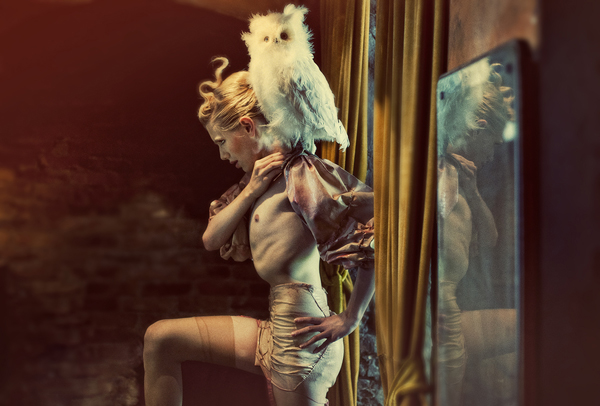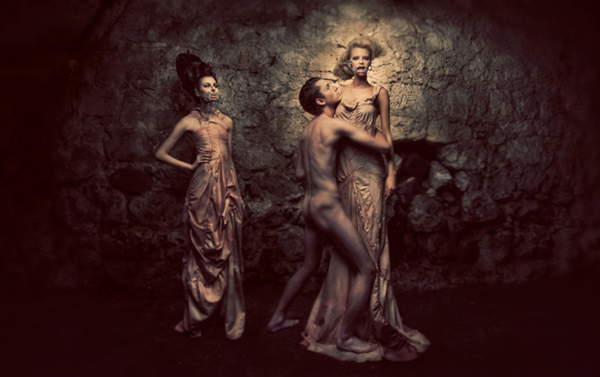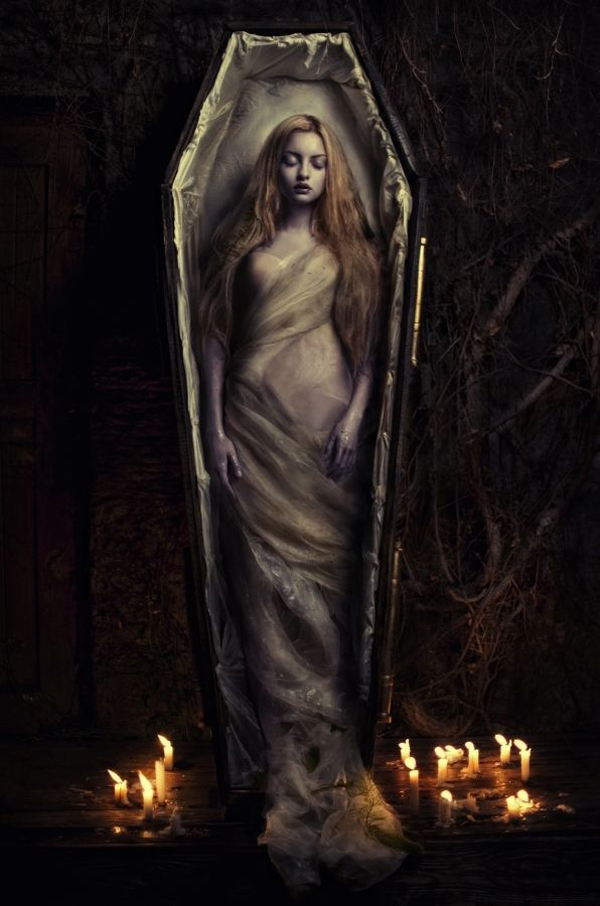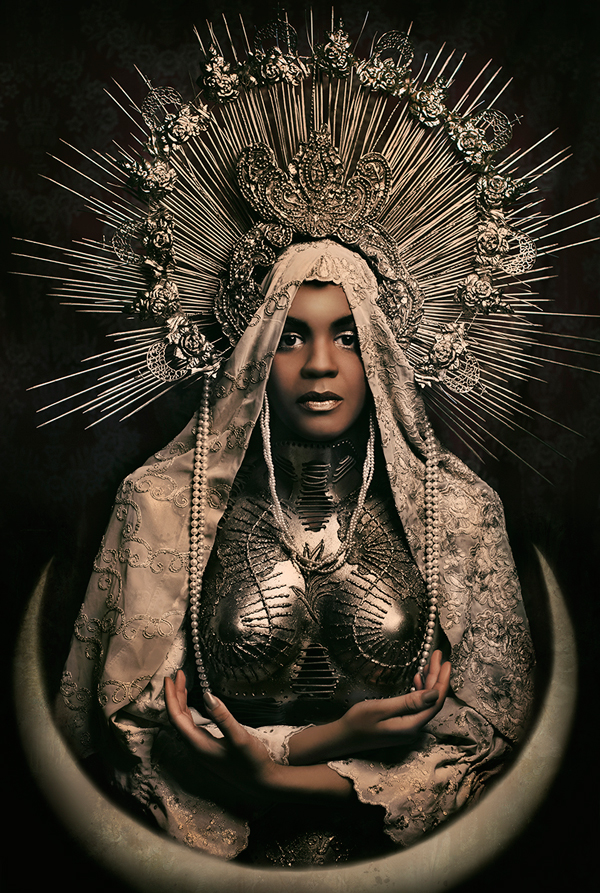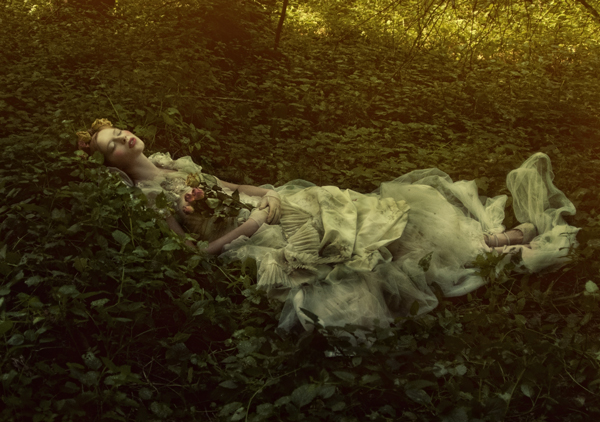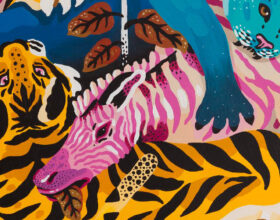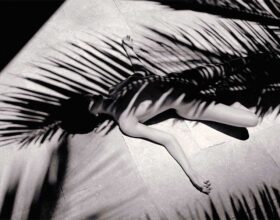Katarzyna Widmanska is a Fine Art, Portrait & Fashion Photographer from Poland. With a background across the Arts, Katarzyna’s photographic works play with chiaroscuro like a painter, with artifice like a theatre director and with a velvety richness and excess that feels at home within a Baz Luhrmann blockbuster. Underlying this is a cheeky nod towards issues surrounding feminine identities that seem to blow apart your traditional female typecast and reanimate her with a Frankenstein hue. For Issue 013 of beautiful.bizarre it was a pleasure to discuss Madonnas, dominatrix, true love and rabbit holes with this enigmatic artist..
Katarzyna Widmanska
Behance | Facebook | Instagram
b.b: Katarzyna, for this conversation we have a virtual location. . . I think for you we’d have to be in a location somewhere between pure imagination and the real world. I’m thinking it’s the ruins of an old church or an old theatre. We could be sitting on ornate thrones . . . or perhaps we’re chained to them. We might of just conducted a séance or perhaps we actually are in the afterlife. Your work seems to sit in the spaces between all of this . . .
I can’t help but think your childhood was filled with folk lore, fairytales and religious iconography. I’m curious. . . If you as a five year old could see your work today, what do you think she’d think? Would it be familiar to her? Frightening to her? How much of her wonderland is in your work?
KW: I’d love to look at my pictures as a 5 year old Kasia. Unfortunately, I can only guess but I think there’s a lot of her wonderland there. I always liked strange and twisted pictures. I think it wouldn’t frighten her… maybe just a little bit. I grew up in an artistic family, as my parents are jewellery designers. My childhood was filled with art and ghosts. I would often go to museums, exhibitions and other artist’s ateliers.
As for the ghosts, grandma’s sister was Medium – yes she was calling spirits – It frightened the hell out of me but maybe it made me more sensitive to feel and see more. I was particularly drawn to fairytales, especially the strange or horrific ones from Brothers Grimm and Hans Christian Andersen but my favorite one from the beginning has always been Alice in Wonderland. I could read this book repeatedly it fascinated so much. Maybe because every time I kept on reading it I went deeper and deeper down the rabbit hole.
b.b: There’s a poetic sense of irony in your work that marries so well with your chosen medium. On the one hand, your themes explore darkness, the unknown, the supernatural, and yet photography is all about the magic of light and the manipulation of it. Tell me about how light and dark play out in your work?
KW: In shadows, you can hide untold secrets and I prefer to hide rather than to reveal. Light & darkness are the essence of photography but first they are essence of painting. I had very good teachers like Rembrandt or Vermeer. Five years of art studies left a mark as well. Balancing the shadows, lights and mid-tones is the best way to create mood and atmosphere. Some people say that my photography is very close to painting and I agree because I’ve learned about light from the Masters.
b.b: Your Madonnas series takes my breath away. Traditionally she’s seen as a symbol of purity and the essence of motherhood. Your Madonnas also seem to have a sense of Joan of Arc about them. They wear their adornments like shields and I can’t quite believe that they’re Virgins. What does the Madonna represent to you? How have you redressed her?
KW: The main genesis of the Madonnas series is very personal, so it remains my secret. I can say however, that it is some kind of tribute or homage to her.
I come from a very religious country. In Poland, the cult of Virgin Mary is very strong. Whether you want it or not, you are surrounded by religious iconography. (We have plenty of beautiful Madonna depictions like Candlemass, Herb, Black). Although I’m an atheist it has always fascinated me and one day the time had come to create my own Madonnas.
b.b: Speaking of bold women, I love how you play with the concept of what is feminine across your work as a whole. For centuries women had to fit the religious mould of being the Madonna, the Witch or the Whore. I feel like your work re-imagines these stereotypes giving them tension and depth. We see women in positions of power as you play with fetish roles and subjects of dominance. Some are constrained, some are defiant, some are princesses and some wield swords. What is the role of the feminine in your work? Is it an identity you consciously manipulate or is it something that evolves more organically?
KW: As they say, a woman has thousands of faces. It depends; sometimes it evolves more organically mainly because I’m woman myself. Other times I consciously manipulate their identity. I like to play with the audience, affect their senses, emotions, pull the strings, and make them think. On the other hand, I never like to be explicit about what I have on my mind when creating an image. I like to leave my images free to open interpretation. My photos are in some part projection of myself so I think that every woman on my photograph has element of myself.
b.b: Your work deals with death, power, and the supernatural to name a few. I feel like artists are always chasing something in their work, something they need to communicate. What are you chasing Kasia? What is keeping you up at night?
KW: Although my Alice caught the rabbit, I’m still chasing it (but my rabbit is black). It’s a Wonderland that is dark and scary, full of defiant demons and mysterious ghosts but it’s also thrillingly beautiful.
b.b: I feel like fashion and adornment plays such a key theatrical role in your work. It’s almost like a siren in your work, calling the viewer in through beauty and yet eventually revealing something a little more savage underneath. You often collaborate with some incredible designers like Katarzyna Konieczka. What role does fashion play in your personal work? How do you collaborate with designers?
KW: It plays a very important role because it’s a part of the whole concept. In the beginning, I was creating costumes by myself and later on I started to look for designers who create costumes that suit my visions. That is how I met Kasia Konieczka.
It usually starts with an idea for a photo shoot and then I look for a Designer that fits. The only exception is my necromantic series. Here Konieczka’s costumes inspired me to do the shoot.
b.b: Collaboration. Your fashion films are amazing. Suddenly your worlds break into the 3D. They’re given movement, time and sound. How has this changed how you work? What has it opened up to you? Do you find it easier to play with narrative through the medium of film or is it more challenging?
KW: Challenging and amazing. I’m in new territory and I like that. It hasn’t influenced my photography but my photographic eye and skills are huge help in film.
I can’t sit in one place. I’m always on the run, searching, exploring and challenging myself. For a long time I felt that photography is not enough. I wanted to go further and images that move seemed so awesome to me! I’m not sure I would have dared to go in this direction without my boyfriend, Amadeusz. When I met him my life changed and I had found my second half. We are union: partners in creation and love. We create together as Redrum Image duo – everything from concepts, directing, post-processing and music as well.
b.b: I love your description of the camera being like a third eye. Like a tool that can transcribe the worlds in your head into the something you can share. How much of these worlds exist before you click the shutter release? How much has the real world changed the final image? I’m curious about your process of creating . . . how much does spontaneity play a role in your work versus how much of it is meticulously orchestrated?
KW: 90% meticulously orchestrated and spontaneity the rest. Concepts for photo shoots usually just appear suddenly in my head. Sometimes it’s a whole picture while other times it’s only a concept, a thought. The process usually goes the same way though. I usually get a concept/vision that appears all of a sudden or sometimes its inspired by something I’ve seen. Then I begin to develop this vision in my head. When it’s ready, I start looking for locations, models, costumes etc. I tell my team what the concept is, what makeup/hair they should do. I tell the models what poses they should they achieve and so on. The actual photo shoot is rather short. I know exactly what I want to do. Of course, sometimes my first vision is modified during the photo shoot.
b.b: If you could create a wonderland, which was comprised of all of your work to date – is it a place you’d like to visit? Is it a rabbit hole you’d love to go down?
KW: Hell yeah!
b.b: Kasia, what are you raising from the dead at present, what world are you conjuring – tell me about your upcoming projects?
KW: I have had almost two years break with art photography as I’ve focused on fashion and film.
But soon I’m starting to work on my next art projects: Haunted (draft title) will be some kind of Ghost Tales editorial. The other is The Icon – a photo shoot somewhere between fashion and art photography inspired by orthodox icons.
Chase rabbits with Katarzyna on facebook, instagram and vimeo.


